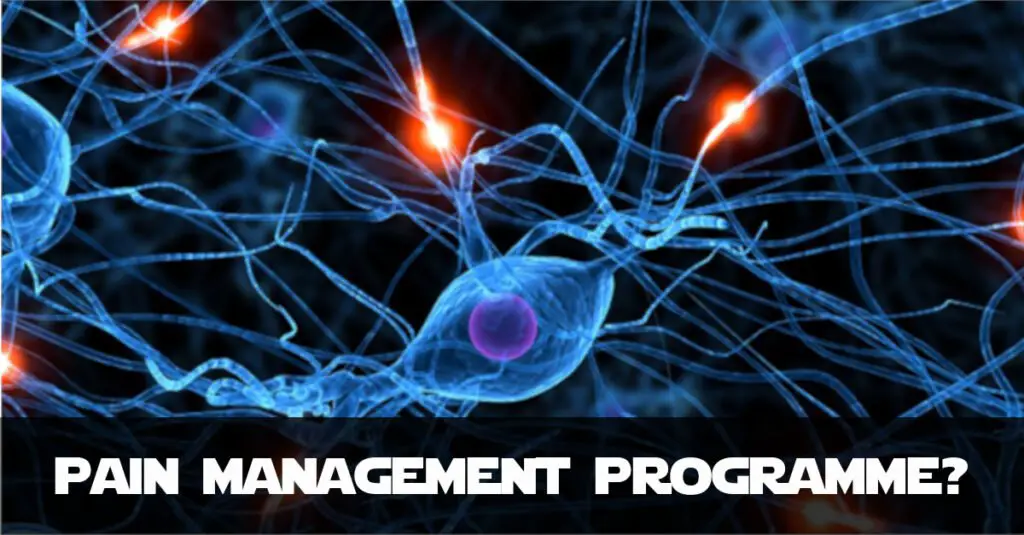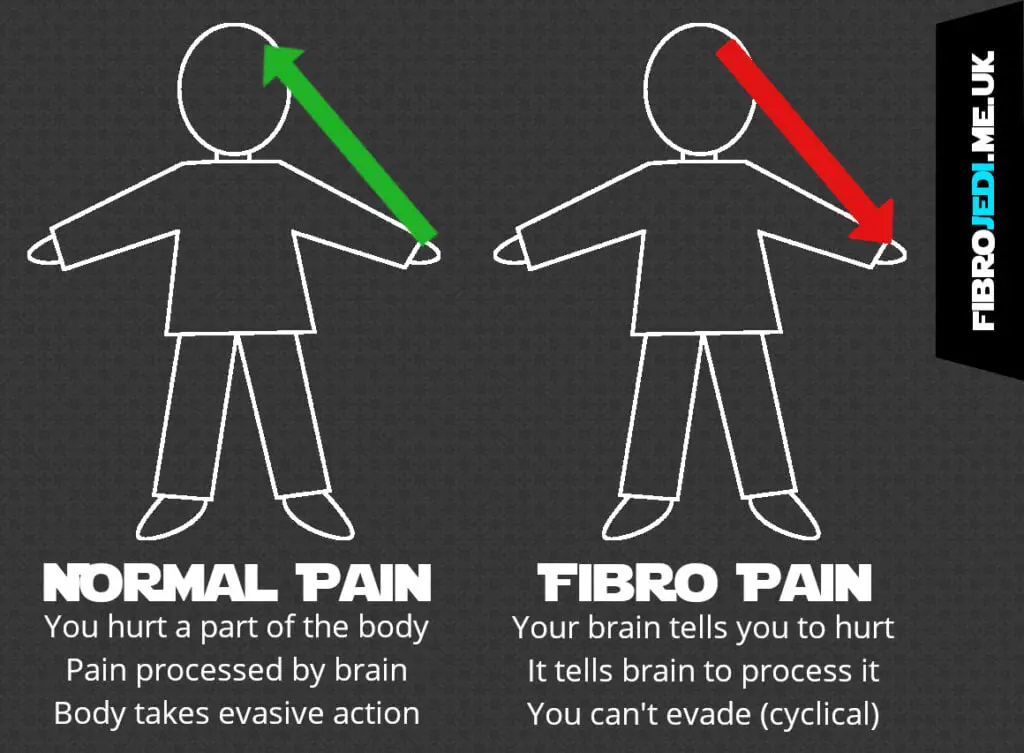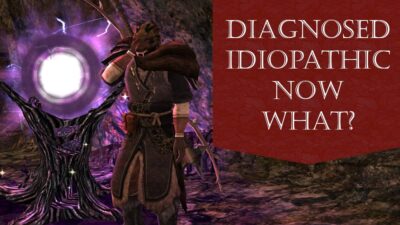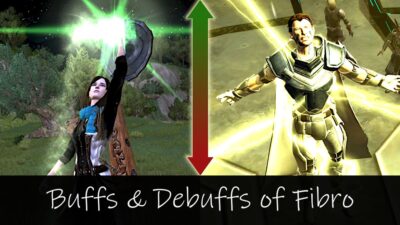 In late 2017 I was put in a waiting list to take part in a Pain Management Programme. This service, aside from the others provided by the Pain Management Clinic, was recommended to try to look at the non-medicinal methods of coping with my increasing pain levels. Sadly it took the system 9+ months for me to start the programme (it nearly ended up being a year!).
In late 2017 I was put in a waiting list to take part in a Pain Management Programme. This service, aside from the others provided by the Pain Management Clinic, was recommended to try to look at the non-medicinal methods of coping with my increasing pain levels. Sadly it took the system 9+ months for me to start the programme (it nearly ended up being a year!). So here’s an overview of my first session. I hope it helps people that don’t have a chronic pain condition to understand what’s happening in my life. I also hope it helps those that do to see if it would be of benefit to them.
What is a Pain Management Programme?
From what I’ve gathered a Pain Management Programme (which I will sometimes refer to as a PMP in this post) is not primarily aimed at reducing what I call felt pain. However, by putting other things in place in life, you can try to work towards a life where pain is all-encompassing but you can live life a bit more freely. In one sense it would be better called a Life Management Programme, as some of the principles could help various people, with or without chronic pain.
According to those running the Programme, the main purposes of the PMP are:
- Finding strategies to cope with pain better.
- Breaking mental cycles that could make felt pain worse.
- Finding techniques to deal with bad days.
You may pick up from these points that therefore it’s more about how we think about pain and react to it, and less about reducing the pain itself (though adjusting thoughts can impact pain levels as we’ll see).
Fibromyalgia Pain Signals compared to Normal Pain Signals
- Pain in “Normal” People: You hurt yourself somewhere, a signal is sent straight to the brain at approximately 100meters/second. That signal is sent straight back to help you take evasive action – so you can get away from the source of the pain.
- Pain in Fibromyalgia: Your pain signals starts in the brain. That means your brain tells something to hurt. The signal is sent back at about 2meters/second, so much slower than “normal” pain”. This causes a constant pinging of alertness because you’re always being nagged by your pain reflexes. And the sucker punch? You can’t remove yourself from source, because it’s your brain doing it. This is why sleep is poor for Fibromyalgia sufferers as processing pain increases alertness.
Pain Gating
“Pain Gating” is a term that refers to techniques designed to close the ‘gates’ to a flood of pain. What we do in life, or how we think about things can either open the gate and increase our pain, or close it to decrease it. Ways you can try to close the gate are:
- Medication: either taking it before doing something that is likely to put you in pain, or taking it as a response to pain. But as I recently discovered, I have basically tried all currently-available medications, so there are no new options out there for me.
- Finding ways to release your own endorphins (e.g. gentle exercise, relaxation techniques)
- Change how you perceive things (don’t make them bigger in your mind than they are in reality). Because fear and anxiety lead to more pain, anything you can do to reduce anxiety will reduce a fluctuation in pain.
Pain, Stress and Relaxation Techniques
One of the most important points made at this first session is that being in pain itself is stressful. Therefore any other stresses – e.g. work, finances, even worrying about where your health is ‘going’, can make pain worse. But aside from ‘stress’ as most people would look at it, fighting pain all the time is stressful.
Relaxation Techniques
Relaxation techniques can release endorphins and help close that pain gate. In the next few Pain Management Programme sessions, they will cover different relaxation techniques. These include:
- Visualisation: mentally putting yourself into a situation you find relaxation and engaging with that environment in your mind’s eye.
- Muscle Groups: shutting off all distractions and focussing on relaxing a different part of the body for a few minutes.
Relaxation Techniques can improve sleep quality but it takes routine and commitment for this to take effect. The PMP recomment 20 mins once or twice a day for 6-12 weeks. At that point it should just be part of a habit or life routine, so you should keep it up. We were also recommended to choose a set time so it happens every day.
Breathing Exercises
Aside from these relaxation techniques, because chronic pain affects your breathing (and oxygen flow around the body), we were given breathing exercises to do as well. Simply slowing the breathing down and increasing oxygen flow can help the body be more relaxed.
And in both breathing, and relaxation techniques, the key is to mentally separate yourself from your life (and things that cause you stress) and just to focus on your breathing, or your muscles. Because pain can alter breathing (make it shallower) and this can lead to agitation and tension, by slowing it down you can counteract it. Again you may not improve your ‘base’ pain levels, but you may be able to curb extra spikes (flares) in pain.
My Action Points with Fibromyalgia
So from this first session, what do I need to do?
- Need to plan life: chores, productivity, pure rest and stretches. I have to ensure I don’t attempt too much in one day. As the housework is mostly my responsibility, I have to not do it all in one or two days, but spread it out over the week.
- Fluid Planning: Although the Pain Management Clinic say to “do what you plan, not what you feel like”, if I’m in too much pain to, say, do the hoovering, then you shouldn’t push yourself. Plans/structures need to be put in place, but I have to be open to that changing each day, if needs be.
- Do Breathing Exercises: I need to plan 20 minutes each day to practice the diaphragmatic breathing exercises.
As this was a few weeks ago, I have now put most of this in place. I have had to use Trello to help plan/organise life. This is to ensure I don’t do too much on one day and to ensure my breathing and stretching exercises actually happen each day:
So far the breathing exercises have calmed my mind down, but not necessarily my pain. But that’s still a benefit. And I’m only on week two out of the twelve weeks I have to persist with!
TL;DR Pain Management Programme and Fibromyalgia
In Fibromyalgia the source of the pain is the brain, therefore I cannot escape that. However, learning to purposefully relax the body, to calm myself down in stressful situations, I may be able to help reduce flare-ups of my Fibromyalgia pain. The Pain Management Programme is designed to help put building blocks in place to cope with the pain I’m likely to have for the rest of my life. Life will look different compared to earlier years, but purposefully doing something to help myself is what the Programme is all about. I’ll do write-ups from future sessions when I can!









